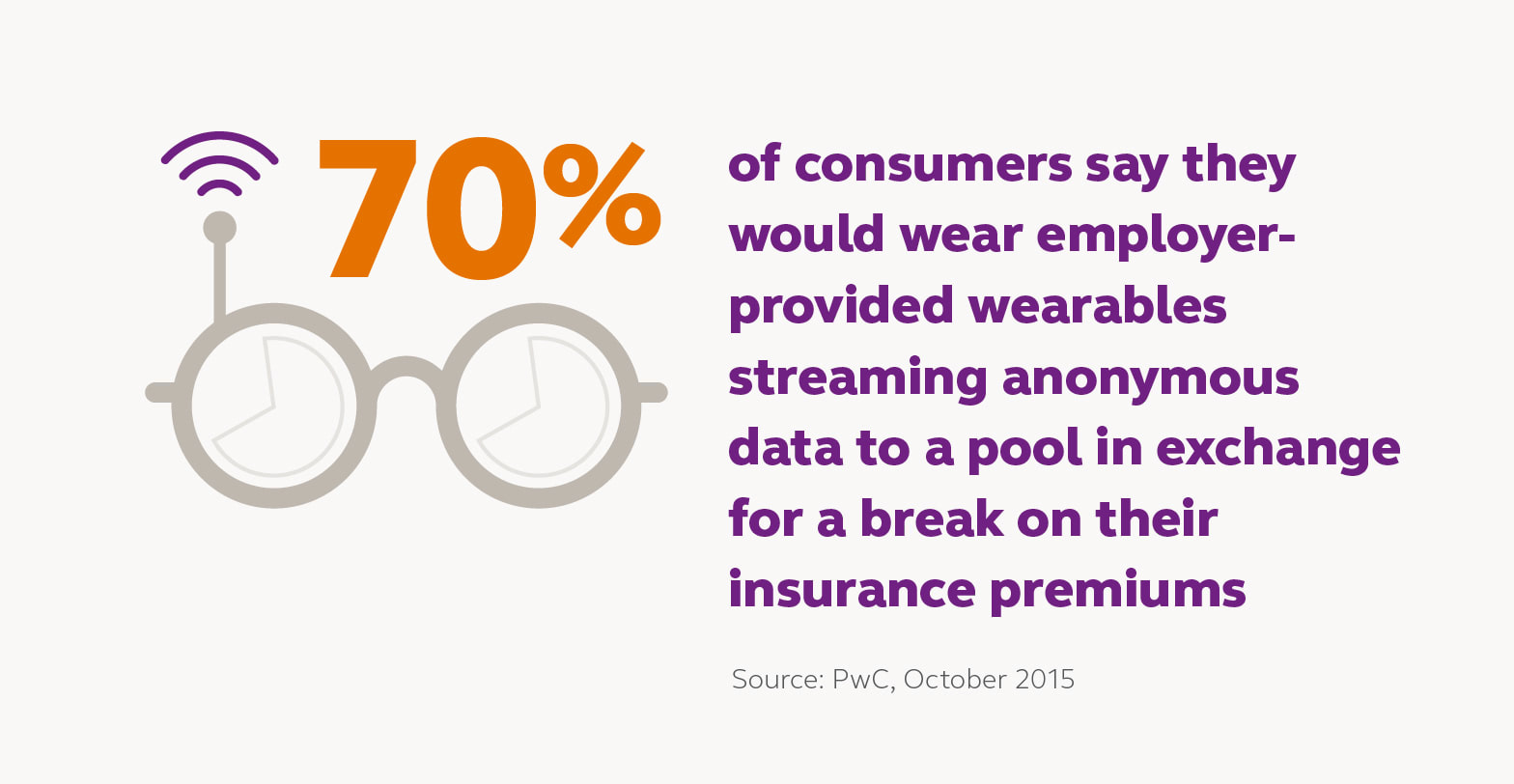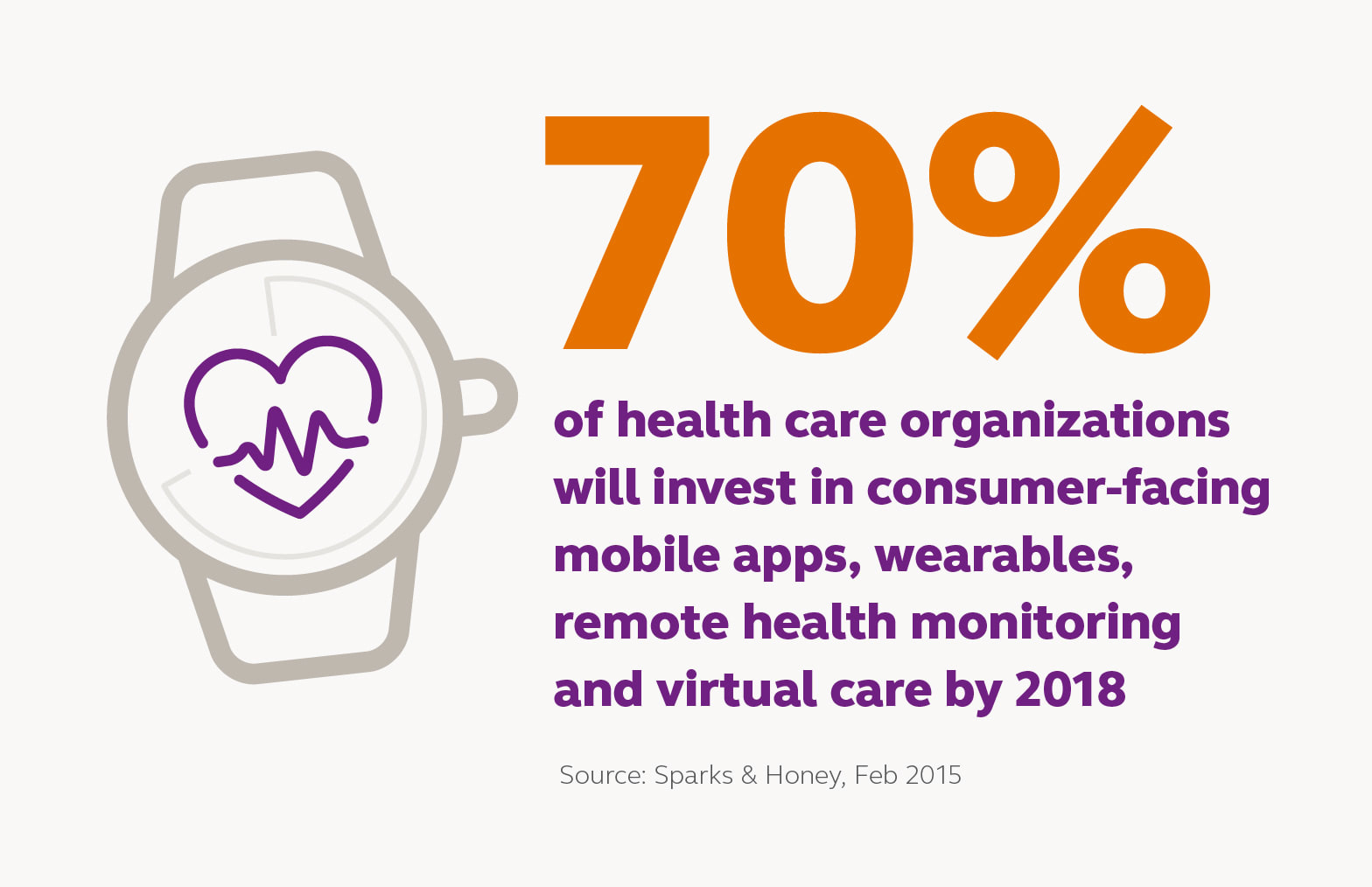
DATÜM: Citizen Health
As healthcare costs continue to increase, operators are exploring new delivery models and social platforms to personalize the provision of healthcare services. Companies are pouring resources into this field to create more personalized, secure and affordable health and wellness options.
Mobile Health Influence
There is no denying that the age of social interaction and technology has arrived in the healthcare industry. Our world is increasingly mobile, and healthcare providers have no choice but to keep up with the times or get left in the dust. Consider the following:
- 70% of health care organizations will invest in consumer-facing mobile apps, wearables, remote health monitoring and virtual care by 2018 [source: Sparks & Honey, Feb 2015]
- 70% of consumers say they would wear employer-provided wearables streaming anonymous data to a pool in exchange for a break on their insurance premiums [source: PwC, October 2015]

Mobile health, telemedicine, wearables, big data and analytics are becoming sophisticated enough to become diagnostic centers in the palms of our hands, but getting consumers to trust these innovations and use them consistently is still challenging. How do we successfully merge physical healthcare with advancements in digital care and why is it so important to do so?
Tempt Them with Tech
Today’s healthcare providers are attempting to engage patients using technology and social interaction. From DIY healthcare to boutique hospitals, here are a seven ways that the industry is integrating the digital world with physical healthcare.
- Just as Warby Parker and its countless imitators disrupted the eyeglasses category, Blink is poised to do the same for optometry. Launched last month, the startup sends technicians to people’s homes to perform eyesight exams. Trained assistants arrive with portable versions of the mammoth devices typically used. After the technicians take the measurements, they are then given to a team of optometrists to review and approve the prescriptions, which customers can then use with whatever retailer they choose. Currently only available in NYC, on-demand appointments cost just $75. The service is best suited for younger generations, as technicians are not equipped to respond to eye health issues.
- Heal is trying to revive the practice of doctor house calls. The service allows patients to summon doctors to their doorsteps on-demand in under an hour—an experience that has given many people good reason to label it the “Uber of doctors.” Company founder and kidney specialist Dr. Renee Dua conceived the idea for Heal after enduring a long night in the ER for her infant son’s cold. With the knowledge that most doctors have the tools necessary for house calls, she believed that there could be a more efficient way to service patients, and thus the company was born. Heal currently serves LA and San Francisco.
- The Ambulance Drone is an all-purpose medical toolkit that can be automatically flown to any emergency situation to help citizens perform lifesaving procedures. This way, when people at the scene call emergency services for help, emergency services immediately dispatch both an ambulance and an Ambulance Drone. The drone is capable of arriving in roughly one minute. Created by Alex Monton, a graduate of the Netherlands-based Delft University of Technology, the drone houses a compact defibrillator, medication and CPR aids, as well as other essential supplies for people to use while waiting for a medical professional.
- Columbia University biomedical engineers invented a smartphone attachment that can test human blood for HIV or syphilis in 15 minutes.
- SniffPhone will employ NaNose breathalyzer technology that can ‘smell’ a user’s breath to diagnose cancer or other serious diseases.
- Google has over 100 doctors and researchers employed to work specifically on health projects, including a contact lens that can monitor glucose levels. They are currently developing a nanoparticle pill with the ability to identify cancers, diseases and heart attacks before they cause irreparable damage.
- “Concierge” or “boutique” medical practices are another growing trend in healthcare. This type of care involves a physician agreeing to provide a range of primary care services to a certain amount of patients for a fee anywhere from $900 to $20,000. Doctors are opening boutique practices to avoid dealing with insurance and reimbursements. Some of these physicians do not work with insurance at all or pursue reimbursements on a limited basis. They instead charge patients on an annual or monthly basis for 24/7 access and full coordination of care. This enables physicians to provide a higher quality of care to the patients they treat. According to a survey by the American Academy of Private Physicians in 2012, it was reported that there were 4,400 concierge doctors in the U.S., representing a 30% increase from 2011.

Bring It Up To Speed
While some of this technology is incredibly advanced, there are many ways for future-thinking brands to leverage these trends and evolve their digital patient care strategies in order to provide more valuable health and wellness experiences. Here are a few ideas healthcare brands should keep in mind to succeed into the future.
- Speed Up: Society moves at a faster pace now. Healthcare has to catch up. Companies should be prepared to adopt digital capabilities to provide consumers with a more convenient, positive experience and a quicker check-in and wait time. With this convenience also comes the desire to personalize. Amenities, such as a hospital-like environments, artwork, nature views and spa treatments can help a patient feel more comfortable.
- Be More Accessible: Technology helps businesses work more quickly and efficiently. Healthcare consumers are expecting this with those services as well. For example, with the help of CallisonRTKL, UT Southwestern implemented a videoconferencing capability in all patient rooms in their new William P. Clements Jr. University Hospital. This feature enables patients to stay connected with family and friends and allows doctors to check in with their patients. It saves the doctor travel time, which in turn allows them to have more time to engage with patients and coordinate their care.
- Stay Up-to-Date: Healthcare services should be able to reap the benefits of technology advancement. In order to do this, healthcare providers must implement new technology developments to keep health technology up-to-date and enhance the capabilities and opportunities technology has in healthcare.
